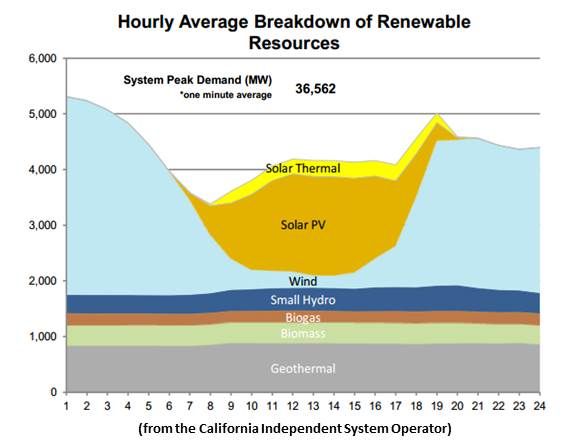California’s solar energy generators set a new record on Friday, June 7, at 12:59 p.m., breaking through the 2-gigawatt landmark to put 2,071 megawatts of electricity on the state’s grid.
The new milestone was passed less than a year after the state’s solar broke through the 1-gigawatt output barrier.
The 2,071 megawatts is enough electricity for 1.5 million California homes, according to the California Independent System Operator (the ISO).
“This new record is remarkable considering the amount has more than doubled since last September, when solar peaked at 1,000 megawatts,” said Steve Berberich, the ISO’s President and CEO. “We expect to hit more record peaks on a regular basis.”
California leads the U.S. in solar. It had 2,537.4 megawatts of installed solar capacity at the end of 2012, according the GTM Research 2012 U.S. Solar Market Insight report. It is also second in the country in installed wind capacity and first in geothermal capacity. Two years ago, the state grid operator created a dispatch desk dedicated to managing renewables.
“Our renewables desk operators, the first in the nation, are able to focus solely on creating the weather forecasts and demand predictions that enables them to more efficiently dispatch,” explained the ISO’s Steven Greenlee. It also allows them to work with other desks on managing the ramping of resources like natural gas that support the use of renewables without threatening reliability. “This value is highlighted during days of high renewable energy production,” Greenlee added.
“This awesome growth is just the beginning,” VoteSolar Executive Director Adam Browning said. “Solar’s contribution to the state’s electricity supply has doubled since last September and will double again by the end of this year. We are going to see records broken many times as we move ahead.”
Thinking about the shuttering of California’s 2,200 megawatt San Onofre Nuclear Generating Station, which was announced by Southern California Edison the same day that solar set its new record, Browning said nuclear power’s failure represents a challenge to replace it with low-carbon and no-carbon alternatives. “The planning for the long-term solution has just begun.”
Peak demand on Friday was 36,562 megawatts, making solar more than 5 percent of the state’s electricity demand. Renewables peaked at over 7,600 megawatts, accounting for over 20 percent of the state’s peak electricity.




